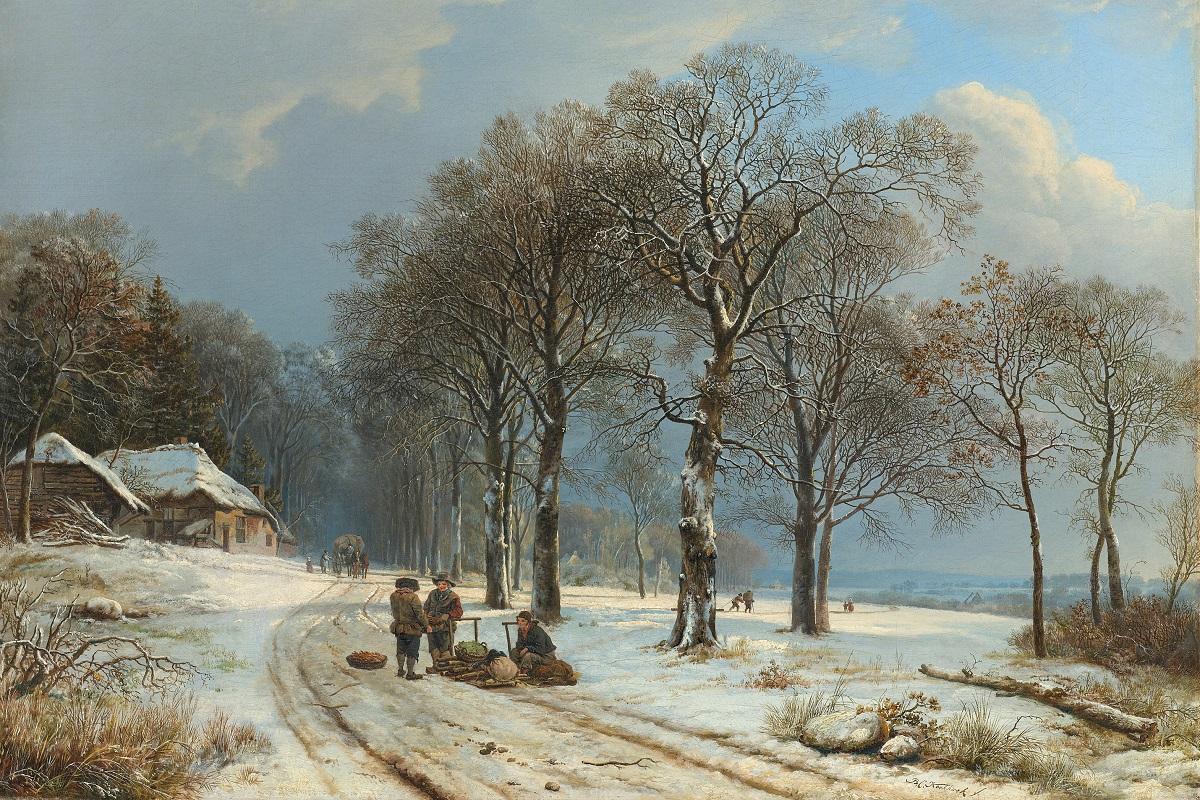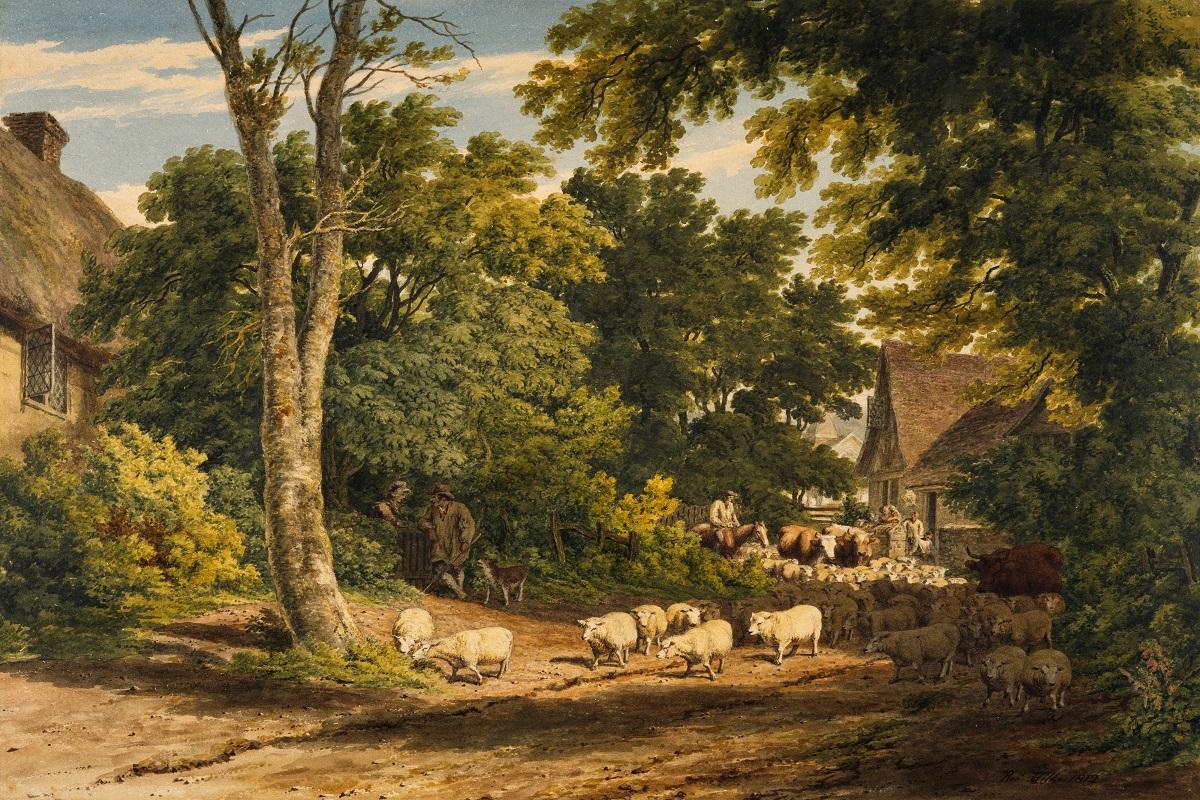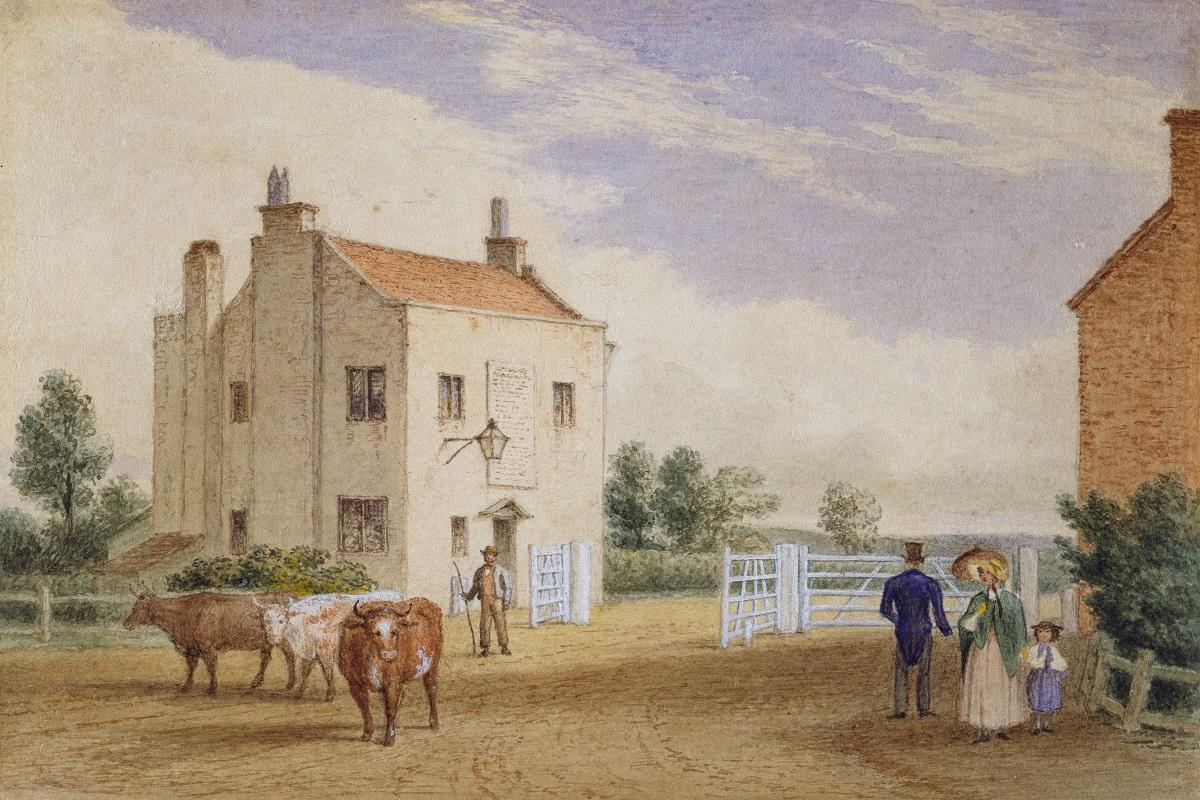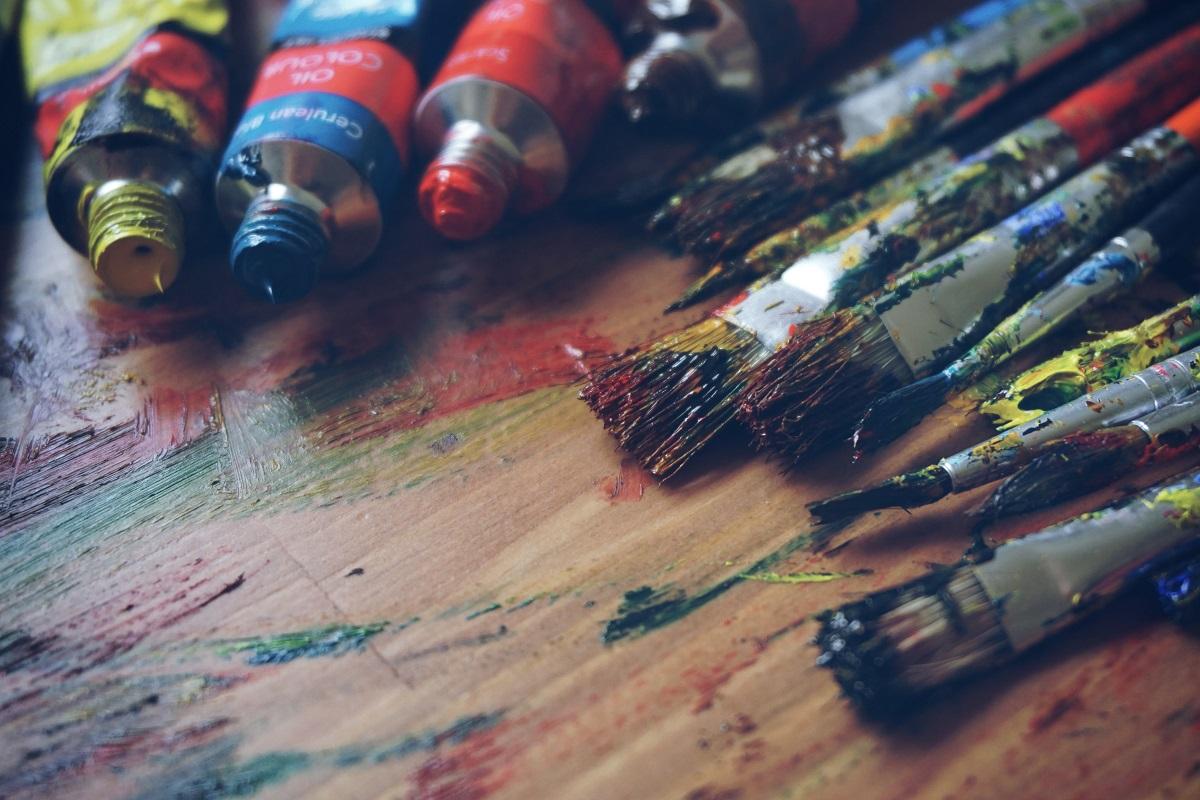Oil paint is a versatile art medium that offers you endless opportunities. But, before you get started, it's better to get acquainted with the paint.

As a slow-drying paint, it's easier to mix and use old paints for your portraits as you get more time to play around with the colors. Plus, you don't have to worry about the paint changing tones once it's completely dry. But, what about the expiration date of the paints? How long do oil paints last? How to know if the oil paint is good enough to use or is it too old?
If you buy containers of the best oil paints, you'll notice that it doesn't come with a clear expiration date like acrylic paints. Does that mean oil paints don't expire? Or, Can you paint oil over acrylic?
We have a pretty interesting story here that we plan to unravel in this article. Without wasting any more time, let's get our paints out!
Some Basic Info About Oil Paints

As the name suggests, oil paints are oil-based, where color pigments remain suspended in natural or vegetable oils. The most commonly used oil for preparing oil paints is linseed oil. Compared to acrylic paint or watercolor paint, oil paint has a thicker consistency that feels like butter and takes more time to dry.
The oil binding the pigment particles lead to the slow-drying of this paint in a tube and on canvas. Since the drying time is more, it's an excellent choice for developing elaborate artworks without worrying about blending fresh colors every time you're painting. Furthermore, the colors don't lose their intensity or depth once they are completely dry.
While water-based paints, such as watercolors and acrylic paints, dry through evaporation, oil paints react with air through oxidation that hardens and locks the colors on your canvas. While the colors don't lose their luster or intensity, they can grow hard and brittle with time, creating cracks in the painting.
It's essential to properly store and maintain oil paints so that they can stand the test of time.
Do Oil Paints Come With A Shelf Life?
Oil paint tubes don't come with any fixed expiration date, and if they are kept sealed properly, you can use them for a long time. If the tubes are left unsealed, oil paints tend to harden inside them.
Linseed oil can expire quickly or oil paints can develop mold with time on canvas if the painting lacks maintenance. But, generally speaking, oil paints have the longest shelf life compared to other paints. If you store the paints under the right conditions, they can easily last up to 30 or 40 years without going bad.
In contrast, watercolor paints only have a shelf life of about three years, and acrylic paint can last up to five years. Even though oil paints may expire, their long shelf life makes them more convenient to use than other paints.
What Causes Oil Paints To Degrade Over Time?
Isn't it heartbreaking to see your favorite oil painting turning yellow or its oil cracking and breaking over the years. The chemical bondings inside oil paints make them dry out and become hard and brittle.
If you are an art enthusiast, it's only natural to wonder what happens to oil paints as they grow old. So, in this section, we will highlight three primary reasons that can cause oil paints to degrade with time.
1. The Quality Of Oil
Linseed oil is usually the main oil ingredient used in these paints, but it has poor adhesion quality, causing separation of the color pigments from the oil. When the pigments separate from the oil, the chemical alteration damages the color.
Some pigments, such as titanium oxide, can prevent the polymeric binder inside these paints from working properly. Hence, many artists prefer using alumina to lengthen the lifespan of their oil paints to avoid fading and cracking.
Also, high amounts of color pigments can make oil paintings stiff, leading to premature shrinking and cracking. So, check the oil and pigment ratio while determining whether your oil paint has degraded.
2. Chemical Reactions
The chemicals inside your oil paints continue to react constantly with the surroundings. This ongoing chemical process causes minute changes to the chemical bondings of the paint, making it brittle and delicate with time.
The quality of each paint layer applied on canvas eventually degrades. Furthermore, vegetable oils usually act as the binding agent in oil paints, so when the oil starts to dry out with time, the paint shrinks on the canvas. This causes the oil painting to crack and you can notice visible raggedy lines sprawled like spider webs all over the canvas if the oil painting is quite old.
3. Humidity And Direct Sunlight
If you use oil paints of archival quality, they will last on the shelf for years. But the moment your oil painting is exposed to high humidity, the paint will start to peel off the canvas.
Strong sunlight and ultraviolet rays will ruin the color of oil paintings. Also, temperature and humidity can make your oil paints lose their texture and consistency if you are not careful about storing the paints.
How To Store Oil Paints?
All art materials require proper storage if you want to keep them in top condition and use them for a long time. When oil-based paints are stored correctly, they can easily last over a decade without any damage.
The first thing you need to know about storing oil paint tubes is to keep them properly sealed at all times except when you're using them. Air is the enemy of oil paints, and if they are exposed to air for a long time, the paints become hard and brittle. It's best to store oil paint tubes in an airtight container by tightly screwing the tube caps.
If you have loose paints, you can also store them in leakproof containers. Furthermore, keep the paints in a dark place where they won't be subjected to direct sunlight. In that way, you can prevent the ultraviolet light from the sun from ruining the color and luster of the paints.
And store the oil paints under cold temperatures to maintain their texture and consistency. Some artists prefer to store their oil paints in freezers so that they don't dry out. You can even cover the paint on your palette with aluminum foil or some plastic wrap to prevent them from going bad.
Moreover, the oil will start to separate from the pigment over time as your paint becomes old. As the color pigments are denser than the oil, they will settle at the bottom when the oil starts to separate from them. If you are using oil paint tubes, you can lengthen the lifespan of the paint by storing them upside down.
How Can You Know Whether The Oil Paint Has Gone Bad?
Usually, you can tell whether the oil paint has expired just by looking at it. As mentioned, when the oil separates from the pigment particles the quality of your paint degrades. And if the oil gets completely separated from the pigments, the paint will harden and dry due to lack of oil.
You can't use this dried paint for coloring anymore. There are also some other signs that indicate that your oil paint has expired and gone bad, so let's take a look!
1. Mold Growth
While you can't detect mold growth if the oil paint is inside a tube, it's quite easy to identify when you store the paint in a container. When you have a big paint container, you need to check it for mold growth to determine whether the paint has gone bad.
Mold growth will appear in district black patches over the paint inside the container. If you don't store the oil paint in a dry place, it's exposed to moisture, resulting in the growth of mold and mildew. When you notice such black patches of mold on your paint, it's time to throw it out and buy a new batch of oil paints.
2. Foul Smell
Even though mold growth usually causes your paint to smell weird, you can also get a foul smell from the paint container without mold growth. So, if you get a foul smell every time you open the paint container, toss it out irrespective of whether there's any mold growth.
In good condition, oil paints have a strong chemical smell because the oil and other chemicals act as a polymeric binder to bind the oil to the color pigments. The chemical smell of your oil paint indicates that the chemicals inside the paint are working properly.
However, if you get a foul smell coming from the paint container, it means that the chemicals have expired.
3. Puffed Container
If your paint container has puffed up, your oil paint has expired. The container will puff up due to the release of gasses by the actions of microorganisms as they consume and degrade the oil paint.
So, if you notice that your paint container has swollen or puffed up, don't bother opening it and throw it out straight away.
4. Discoloration
When your oil paint attains a different color than it's supposed to, your paint has probably gone bad. Old paints that are kept in poor storage conditions turn yellow or might appear different because of heat, moisture, or other foreign chemicals.
Say if you mix the oil paint with a paint thinner or other chemicals while painting but don't clean the paint properly before storing, it will discolor. Hence, if you notice that the color of the old oil paint has changed, you need to replace it.
But before tossing out the paint, test it first to check whether you can revive it. In some cases, you might find that the paint is blending properly and its glaze is intact, following which you can use certain tricks to revive the old paint.

Can You Revive Old Oil Paints?
Even though it might seem that you need to toss out the oil paint if it goes hard, there's still a way to revive the old paint. You might be able to reactivate and reuse oil paints by making them softer.
It'll require some mixing and blending of the paints using a paint thinner while you stir it into a paint mixer to restore its thick, buttery consistency and uniform color. You'll also need some tools and equipment to revive your old paint, such as:
- Work gloves
- Face mask
- Paint thinner, like turpentine
- Large plastic container
- Paint mixer
Once you've gathered all the necessary items, it's time to get down to business. So, let's roll!
Step 1: Put On Your Safety Gear
While working with oil paints, you'll be exposed to several chemicals, including turpentine, acting as the paint thinner. Hence, always remember to gear up to avoid any health hazards.
As you quite well know, it is not safe to use your bare hands when dealing with turpentine, so put on protective rubber gloves when working with it. Moreover, you'll be exposed to toxic fumes from different chemicals present in the oil paint and it's best to always wear a face mask to avoid breathing troubles.
Step 2: Pour The Oil Paint
Once you are all geared up, grab your old oil paint and pour it out into a large plastic container. If you use a large container, you won't need a separate container for mixing the turpentine with the paint.
Be careful while pouring out the paint to avoid splashing it. Also, it's best to use an old plastic container because you won't be able to use it again to eat or cook once you mix the turpentine in the container.
Step 3: Apply Turpentine
Now, it's time to add turpentine to your old oil paint to thin it. While turpentine is the best option, you can always go for any other oil-based paint thinners, but you might ask - what is turpentine?
It is a solvent that thins and dissolves your old oil paint so that it can become soft again. Turpentine dilutes the oil paint to make it easier to blend and mix during revival. You can also use turpentine to clean your paintbrushes while oil painting.
Furthermore, turpentine is quite effective in art restoration and maintenance of old oil paintings. You can simply pour some turpentine into an old rug to dab gently on the canvas to prevent the paint from hardening and cracking. And it becomes easier to fix errors by softening the dried paint on the oil painting using turpentine.
But turpentine is known to be mildly toxic and can pass through your skin, causing allergies. It can also lead to headaches, vomiting, and dizziness if you inhale the fumes. That’s why always wear your rubber gloves and face mask while using turpentine, and make sure you're working in a space with good ventilation.
Step 4: Stir The Paint
After you've added the paint thinner to the container, it's time to stir in the old oil paint and mix it well. You can mix in the paint manually, but if the paint is too hard, using a paint mixer can make the process a lot easier.
Start by adding a bit of the turpentine solvent to your hardened oil paint and stir it for a few minutes. If the paint remains hard even after stirring, add some more turpentine and continue the stirring process.
The paint thinner will slowly act on the paint to dilute it and make it thinner. You can repeat the process as many times as you need because the turpentine will eventually evaporate without affecting the quality of the paint.
Step 5: Test Your Paint
After stirring the paint in the turpentine for a while, it's time to test the paint. Apply the paint using a brush and check whether it's blending smoothly and glazes over the canvas. If the paint has that smooth and buttery consistency and maintains a uniformity in its color, you've successfully reactivated the oil paint, and it's perfectly usable.
But when there are small lumps while blending and applying the paint to the canvas, add more turpentine and stir it for a few more minutes. Keep stirring the paint till it has the right consistency and color.
Is It Okay To Use Old Oil Paint?
You don't need to buy new oil paints every time you take on a new painting project. In fact, the long shelf life of the paints makes it quite easy to use old paints for new paintings. You can even use oil paints that are more than a decade old if they are in good condition or can be successfully revived.
However, it's always a good idea to check the paint before you use it for your painting project. The first thing you need to check is whether the paint is properly sealed when you come across an old can or tube of leftover oil paint on the shelf.
Nothing ruins oil paints more than air, so if you see that the paint wasn't properly sealed, don't use it. But, if the sealing is perfectly intact, it should be fine even if the paint is 30 years old.
The second thing that you must consider while using old oil paints is whether they contain lead. Many old varieties of oil paints have lead as their base, especially white oil paints.
As you know, lead is a toxic heavy metal that you must not inhale or ingest. Usually, paints containing lead are available in a tin can with clean warning instructions. So, if you are using old oil paints, make sure it doesn't contain any lead by carefully reading the instructions on the paint can.
In addition to this, check the texture and consistency of the old oil paints before using them. If you notice that the oil has separated from the pigments, the paint is expired, and you need to toss it out. Thus, when you are determined to use your old paints, be sure to look out for the factors we just mentioned.
How To Use Oil Paints Directly From The Tube?
Using oil paints directly from the tube is a great idea to avoid mixing and blending paints on the palette. But, you need to know about some painting techniques to apply oil paints on the canvas directly from paint tubes.
If you are a newbie, you can work on mastering the thin brushing technique, which is an easy technique to use oil paints straight from their tubes. You need to have better control over your paintbrush to master this technique.
There's another technique called Alla prima that includes layering wet paint on top of another wet paint layer without letting the bottom layer dry out. However, if you want to apply this method by using oil paints directly from the tube, make sure to complete the painting in one session.
You can also use a palette knife to apply oil paints straight from the tube to the canvas. A palette knife is excellent for creating thick layers and visual texture while oil painting. Hence, you can quite conveniently use oil paints directly from their tubes by mastering any of these painting techniques.

Tips To Make Your Oil Paint Last Longer On Canvas
Now that you know how to lengthen the shelf life of your oil paints, it's time to talk about making the oil paints last for a long time on a canvas. Here are some tips and tricks that can help you do just that. Let's check them out!
1. Mix The Paints Carefully
The more you dilute your oil paint, the more it peels off from the substrate. By making the canvas wet, it becomes less sticky, so it's more difficult for the paints to adhere to it. Thus, make sure that your canvas is dry before applying the first layer of oil paint.
Iron blacks and carbon oxides are great pigments to improve the wearability of your oil paints as they act as UV screens on your painting. You can use these pigments for mixing oil paints to ensure that your oil painting doesn't shrink or crack.
2. Select Stretched Canvas
Oil paints tend to flake off more easily under alkaline conditions, so it's best to steer clear of using oil paints on surfaces with high levels of alkalinity.
The best substrate for using oil paints is a linen or cotton canvas but art restoration can be a bit difficult if you are using a cotton canvas. Instead, go for artist-grade stretched canvases that are made from jute or hemp to prevent the oil paints from peeling off any time soon.
3. Proper Layering Of Pigments
You can prevent premature cracking of the oil paints on canvas by layering slow-drying pigments over the fast-drying ones. In that way, you can play and experiment with more shades and create an oil painting that lasts longer.
Basically, each layer of paint needs to have more oil than the previous layers so that the paints don't shrink. Furthermore, you can use some varnish and white spirits to spray over the paints in gradual intervals to ensure that the painting doesn't dry out and crack over time.
Spraying an additional layer of linseed oil over the paints can also prevent them from cracking.
4. Avoid Oil Paints Having Bad Lightfast Rating
As mentioned earlier, oil paints and sunlight don’t go well together. The lightfast rating highlights the ability of oils to withstand long-term exposure to light.
For instance, fluorescent colors have a lower lightfast rating and fade more quickly when exposed to sunlight compared to vibrant colors. Hence, avoid oil paints having a low lightfast rating for your oil painting.

How Long Do Oil Paints Last Final Thoughts
Oil painting is one of the most exquisite forms of artwork due to the richness and depth of oil paint. However, if you don't know how to start oil painting and properly store or maintain oil paints, the story won't be so beautiful.
After going through our informative guide, we hope you understand that even though oil paints have a long shelf life, they can expire and go bad quite easily. You need to use the tips and tricks we've mentioned above to make the paints last longer on your oil painting to prevent them from drying up or cracking.
And with that, we wish you all the best as you embark on an artistic journey in the world of oil painting. Stay creative, and see you next time!
